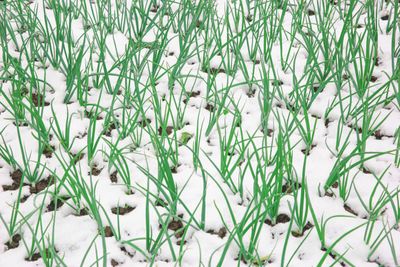How to Grow Winter Onions
Winter onions can actually be planted in spring or fall. However, onions planted in fall generally produce larger yields. Many gardeners like to plant onions in fall, then save a few small onions in a dry location for planting in spring. Winter onions can be planted any time the ground can be worked – usually between October and December in most climates – or two to three weeks before the first hard freeze. Growing winter onions require full sun, as the onions won’t grow in shade. Plant the onions 2 to 4 inches (5 to 10 cm.) deep, allowing 4 to 6 inches (10 to 15 cm.) between each bulb. Water well. The onions are underground and tolerate cold weather. However, a layer of mulch is helpful for overwintering onions in cold, northern climates. You can also plant winter onions in a container. Keep the container near the kitchen door and harvest onions for use throughout the winter. A container with a width of at least 18 inches (45 cm.) is best.
Harvesting Winter Onions
Harvest the first winter onions two to three months after planting. Although you can harvest earlier, the onions will be very small and they won’t have time to multiply. (When allowed to mature, each bulb usually produces seven or eight bulbs.) Continue to pull or dig onions until spring. To save a few for fall planting, allow the tops to dry before pulling, then lay the onions in the sun for a few days so the outer covering dries. Store the onions in a cool, dry location until fall planting time.
Best Winter Onions
Many types are available and the best way to determine the best winter onions for your area is to experiment with different varieties. Example of popular winter onions include:
White multiplier onions, which develop thumb-size bulbs Yellow potato onions, heirloom onions that have been around for well over 200 years.
Others include:
Kentucky Hill Red Yellow Greeley’s
